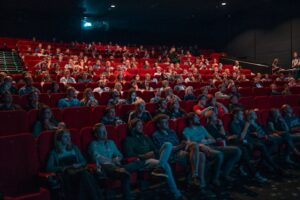Introduction
The news of Robert Redford death hit the film world like a sudden sunset: quiet, inevitable, and deeply felt. Redford wasn’t just a movie star — he was the founding spirit behind the Sundance Institute and the Sundance Film Festival, institutions that rewired how independent films are discovered, financed, and celebrated. As tributes pour in and film lovers rewatch his classics, it’s worth looking at exactly how his vision changed the film ecosystem — and what filmmakers and film fans can take away from that legacy today.
From screen idol to patron of voices: the origin story
Robert Redford’s acting and directing career is the stuff of Hollywood lore, but his decision to found the Sundance Institute in 1981 is arguably his most lasting contribution to cinema. He wanted a place where new ideas could be tested away from studio constraints: labs, fellowships, and a festival that gave real visibility to unconventional work. That move created a formal pipeline by which unknown directors could find mentors, funding, and audiences — and it changed the economics of indie film.
Why that mattered: mainstream studios historically prioritized predictable returns, but Redford’s model proved there was a market — and a cultural appetite — for riskier, auteur-driven stories. The proof is in the festival’s output: Sundance-launched films have gone on to win Oscars, gain distribution deals, and launch careers worldwide.
Concrete impact — numbers and notable success stories
If you want one stat that sums up Sundance’s reach, consider festival viewership and scope: in recent years the festival has registered hundreds of thousands of combined in-person and online attendees (a clear signal that indie film has mass appeal). Sundance became the place a film could be discovered and then amplified to a global audience, from Sex, Lies, and Videotape in the late 1980s to CODA in the 2020s.
Examples that matter:
- Sundance helped elevate early work by filmmakers who later reshaped modern cinema. Directors and films that got noticed at Sundance went on to define careers and even genres.
- Films like CODA (which gained critical momentum through Sundance) show a direct line from festival exposure to awards-season success.
How Robert Redford’s approach changed the business model
Redford’s idea wasn’t only cultural — it was practical. Instead of a single gatekeeper in Hollywood deciding what could be made, Sundance provided infrastructure:
- Labs and mentorships that teach craft and provide networks.
- A marketplace where distributors and sales agents could find work that resonated with audiences.
This decentralized model made it possible for films with smaller budgets to find profitable distribution pathways, while giving creators leverage they didn’t have before. For filmmakers, that translates to more control and sometimes better deals.
Why the timing of “Robert Redford death” matters for filmmakers and journalists
When a figure like Redford passes, media attention spikes and audiences look back across his achievements. That surge in interest is a moment to:
- Re-introduce older films to new viewers (program streaming retrospectives, re-release restored prints).
- Pitch evergreen or reflective pieces (director retrospectives, Sundance origin stories, oral histories).
- Use the moment to elevate under-the-radar filmmakers who follow Redford’s ethos: character-driven, risk-taking storytelling.
Journalists and creators should treat this attention as a window — not a forever state. Timely content that ties a film or filmmaker to Redford’s legacy tends to perform well in search and social in the immediate aftermath of the news.
Practical tips for indie filmmakers (takeaways from Redford’s model)
- Apply for labs & fellowships early. Sundance runs labs and year-round programs that are designed to develop writers and directors. Those programs are often as valuable for mentorship and networking as they are for direct funding. (See Sundance Institute programs.)
- Treat festivals as strategy, not luck. Research which festivals match your film’s tone and audience; plan festival runs around exposure, not just awards. Use the festival to secure distribution conversations.
- Build a festival-friendly pitch package. A short, compelling director’s statement and a clear plan for audience engagement go a long way. Redford’s model rewarded unique voices with clear visions.
- Leverage anniversary moments. Tie anniversary screenings, Q&As, or retrospectives to relevant news cycles — media interest spikes when a cultural icon’s life is in the headlines.
Final thoughts — what “forever” looks like
The phrase Robert Redford death: How the Sundance Founder Changed Independent Film Forever isn’t just a headline — it’s a factual lens. Through his investments in craft, place, and community, Redford altered the mechanisms by which films get seen and funded. That change continues to ripple: filmmakers still use Sundance’s model as a blueprint for cultivating audiences outside the studio system. As the industry mourns, it’s also a useful moment to recommit to the principle that independent stories deserve platforms. For filmmakers, programmers, and film lovers alike, Redford’s legacy remains an open invitation: to take creative risks, build community, and keep new voices in the conversation.







